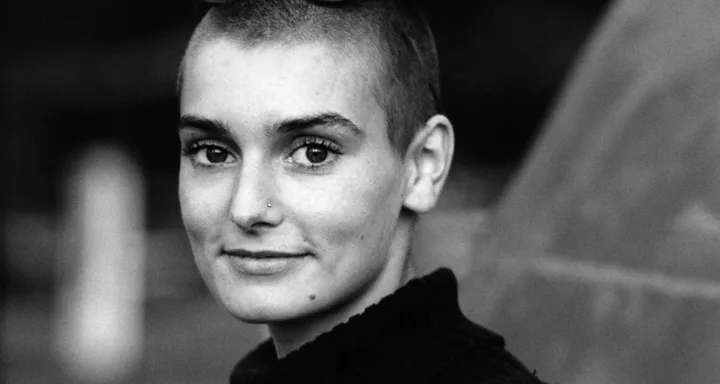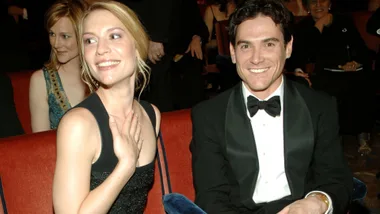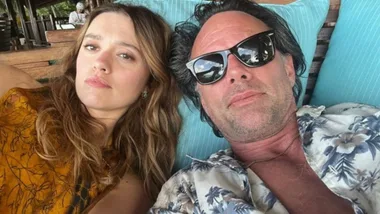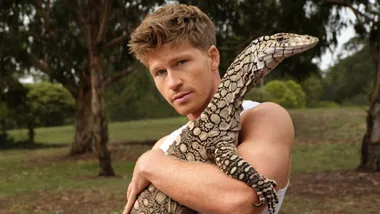Brave and fearless have become generic terms for today’s musicians to market them as authentic. But Sinead O’Connor was so unflinchingly brave, fearless and brutally honest that she happily sabotaged one of the most fascinating careers of modern times. Sharing her raw emotions, childhood traumas and mental illness with the world in an era before social media and before people knew how to process them.
Later in life, O’Connor did embrace social media, documenting a decline that led to her tragic death aged just 56 on July 26, 2023. It was 18 months after her 17-year-old son Shane died after leaving the hospital while on suicide watch.
In what seems to be her final social media post she told the world she was living as ‘an undead night creature’ since his death, saying he was the ‘love of her life’ and ‘the only person who ever loved me unconditionally’.
O’Connor’s first son, Jake, was born in 1987. At the time, she was recording her debut album, The Lion and the Cobra, released that same year.
It was a global hit – three years before the cover version that would make her both famous and infamous. The success was fast, but not without graft and grief.
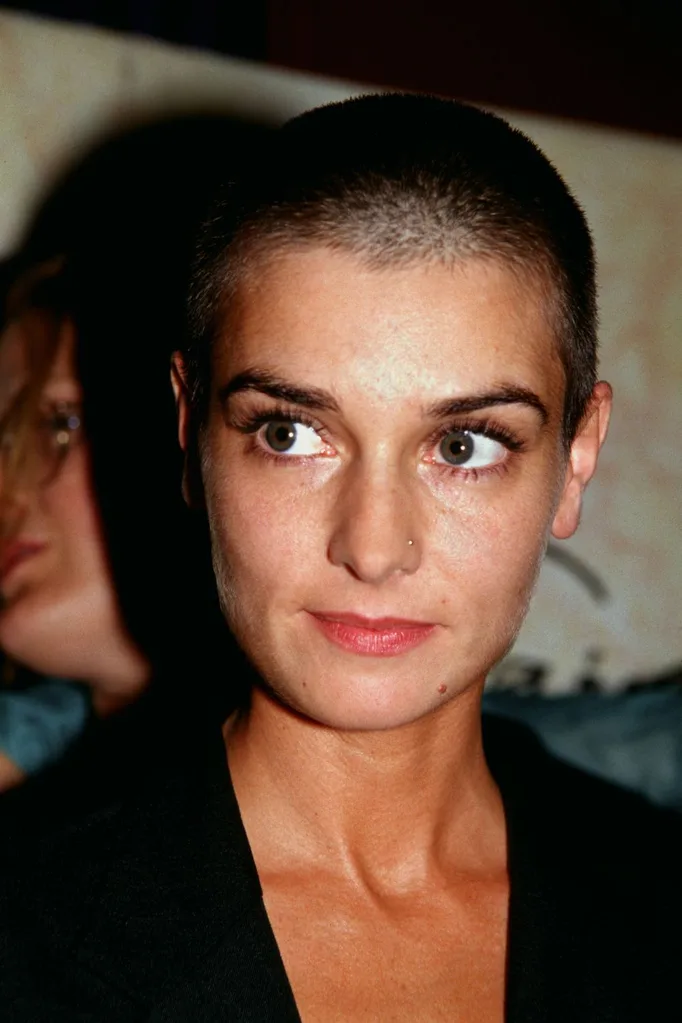
By age 14, O’Connor was already fearless – shoplifting and skipping school. She was caught stealing shoes from a friend and then money from her parents. This led to a stint in a residential training centre for girls with behavioural problems run by nuns. Upstairs was a room for the dying, where the worst young girls were sent to sleep as punishment.
“I will never experience such panic and terror and agony,” she told Spin in 1990. “It wasn’t a government-run institution, it was a Catholic one, which is worse, believe me.”
O’Connor found sanctuary in reading Wuthering Heights and singing. Her music teacher asked a 14-year-old O’Connor to sing Evergreen at her wedding. The teacher’s brother was the drummer in a band, In Tua Nua, who needed a singer. Soon O’Connor had a hit on the Irish chart. But her immediate future was not fame, but rather a strict boarding school near Dublin.
She had shaved her head – soon to become a trademark image – and joined a band during school holidays noting it was “the only thing I ever felt comfortable doing, where I actually belonged.”
Another trademark was her voice – as well as brutal tenderness, she could shout and wail. It was a skill she developed out of necessity when singing Bob Dylan covers in Irish pubs. The crowd would keep talking so O’Connor hollered the lyrics over them. Her hair had grown long by this point, but anyone expecting a sensitive soul on stage was soon shocked. “They thought I’d be really sweet and demure so it used to frighten them, which I enjoyed.”
By February 1985 O’Connor was singing with Dublin band Ton Ton Macoute. Ensign Records liked her voice but hated the band. When she was in the process of sending them her demo tapes, O’Connor’s mother was killed in a car accident. The pair had a difficult and estranged relationship, but O’Connor would tell friends she had a premonition about her mother’s death the day before it happened.
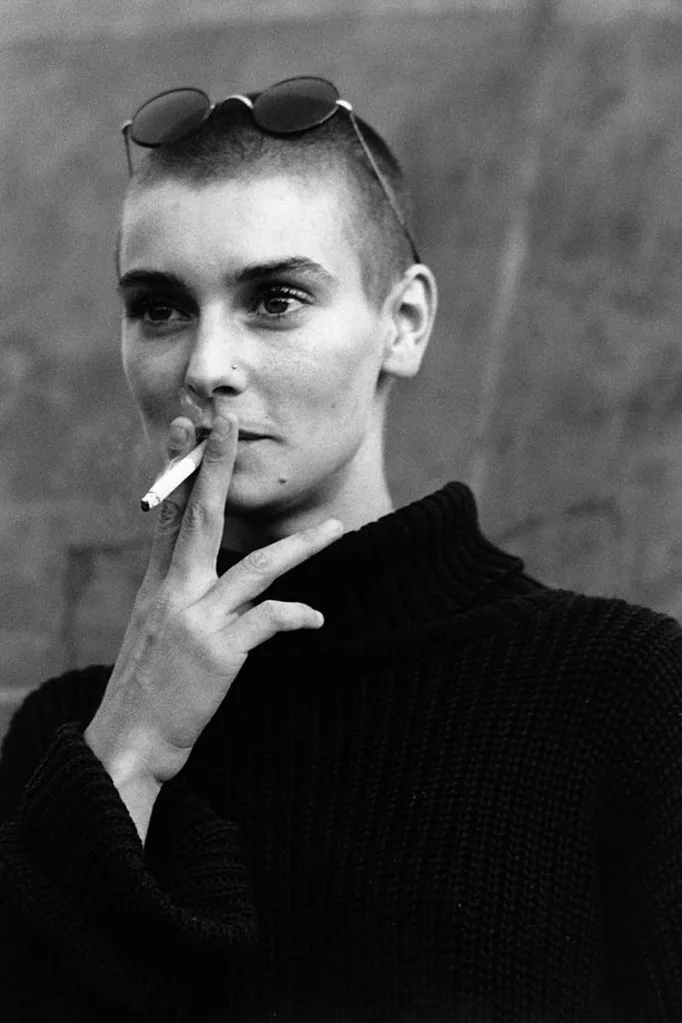
Relocating to London for her career, O’Connor was soon recording a song with U2 guitarist The Edge. She formed a band, signed with Ensign formally and started making her first album.
She became pregnant to John Reynolds, the drummer in her band, after only a few months of dating. They’d marry in 1989. She got pregnant only a few months into their relationship. However, her record label was shocked their 20-year-old new signing was about to have a child at the same time as she would be promoting her debut album.
“They said they’d invested all this money in me and that I was being very selfish wanting to have a baby,” she told Spin.
O’Connor wound up sacking the established producer who’d been hired and handled many of the duties herself.
That self-belief continued – when the record label wanted hyper-feminine photos and videos to promote The Lion and the Cobra, O’Connor shaved her head. She said she didn’t want to be a pop star, she just wanted to scream.
Her debut single ‘Troy’ got attention but little success. Another wholly self-penned song, ‘Mandinka’, got her on alternative radio in America and Australia. It went Top 10 in Ireland, Top 20 in the UK, Top 40 in Australia and saw her sing on David Letterman’s US talk show. The Lion and the Cobra reached No.36 on the US chart, selling half a million copies and getting a Grammy nomination for Best Female Rock Vocal Performance.
She was touring the world by age 21 with her baby son. But a seismic change in her career was on the horizon.
For her second album I Do Not Want What I Haven’t Got, O’Connor wanted to record a song written by Prince for one of his protégé acts, The Family. The ballad about loss and longing was first released in 1985 but sunk without a trace.
O’Connor’s version updated the production but kept the heartbreak – she channelled the grief from losing her mother into her vocals.
“If you don’t emotionally identify with a song you can’t sing it,” she said. The tear running down her cheek in the iconic video wasn’t planned but perfectly captured the passion that connected with the world. “You fell in love with that tear,” she said in 2022 addressing the world. “That was a mirror.”
Released in early January 1990, the single would go to No.1 around the world, including spending a month on top in the US. The album followed in March, joining the single atop global charts, selling two million copies in America alone. Sinead O’Connor was a global superstar thanks to a song Prince had farmed out and forgotten.
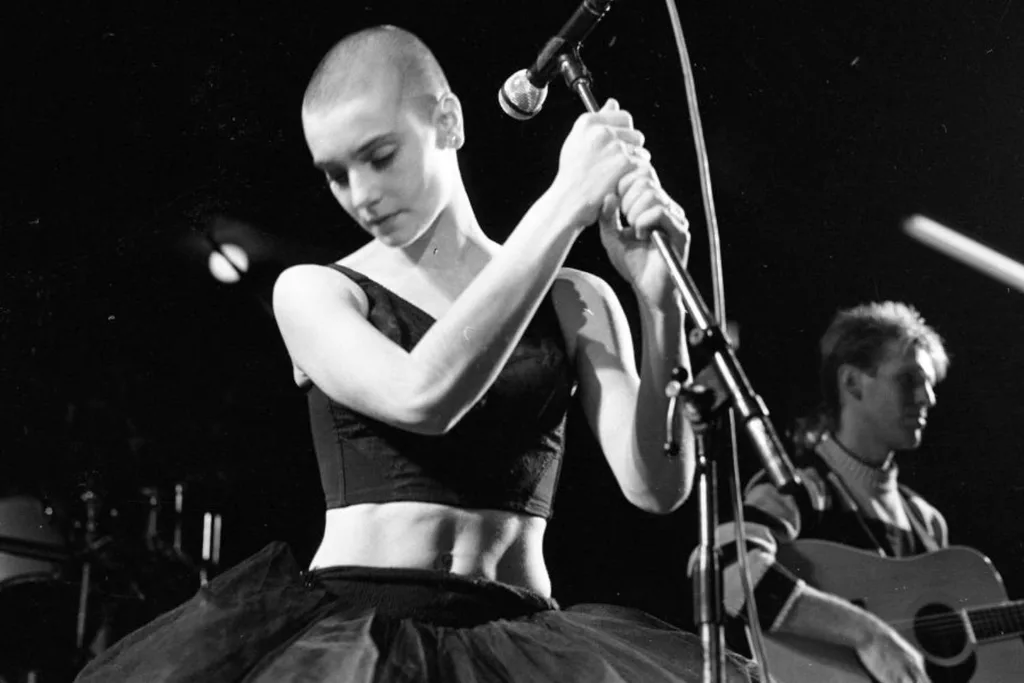
But trouble was brewing with O’Connor a new star unwilling to play by old rules. Now touring major venues in America, in 1990 she refused to play a concert in New Jersey after the venue insisted the US national anthem was played before she performed. Patriotic fans started burning her records and radio stations pulled her music – even Frank Sinatra said she needed a “kick in the ass.” She was nominated for four Grammy Awards, but withdrew herself from eligibility and in an open letter said the awards “acknowledge mostly the commercial side of art and respect mostly material gain.” Decades later, artists like Drake and The Weeknd would do the same; in 1990 it was seen as a brat move, especially by a woman.
O’Connor decompressed from her intense introduction to fame and controversy. She continued to operate under her own rules. “Maybe if I was a man there wouldn’t be such a fuss about it,” she said. “I am not a conformist on any level.”
For the crucial follow-up to her million-selling second album, she recorded mainly jazz standards — some stretching back to the 1930s — with a full orchestra. Any momentum on pop radio she’d built up was lost instantly.
On October 3, 1992, promoting her just-released third album, O’Connor was booked as the musical guest on Saturday Night Live. She was due to cover Bob Marley’s protest song ‘War’, performed acapella. She had performed it in rehearsal without a hitch. SNL went out live – at the end of the song she replaced some lyrics to reference ‘child abuse’ and then pulled out a photo of Pope John Paul II she’d tucked away.
As the song ended, she held the photo up to the camera, stared down the barrel and said “Fight the real enemy” as she tore the photo into pieces. She was no stranger to the Catholic church’s way of dealing with children after her stint in the reform centre and knew of women who’d been raped by priests and hidden away, unable to have abortions due to religious beliefs. She wanted to use her new platform to raise awareness of things the church had tried to cover up – years before others spoke out on the topic. She believed after the National Anthem controversy she had nothing left to lose.
Pre-social media, the news cycle went into overdrive and her album sales stopped instantly. Her next public performance was only a few weeks later. She’d been booked to sing at a Bob Dylan tribute at Madison Square Garden. Many felt she’d cancel. Not Sinead O’Connor. Introduced by singer Kris Kristofferson as “an artist whose name has become synonymous with courage and integrity” when she came on stage there were loud boos. As she’d done in those pubs years ago, she simply sang ‘War’ louder. Kristofferson whispered in her ear, “Don’t let the bastards get you down.” She replied “I’m not down.”
Speaking to the New York Times in 2021 while promoting her autobiography, O’Connor said of SNL: “I’m not sorry I did it. It was brilliant. But it was very traumatising. It was open season on treating me like a crazy bitch.”
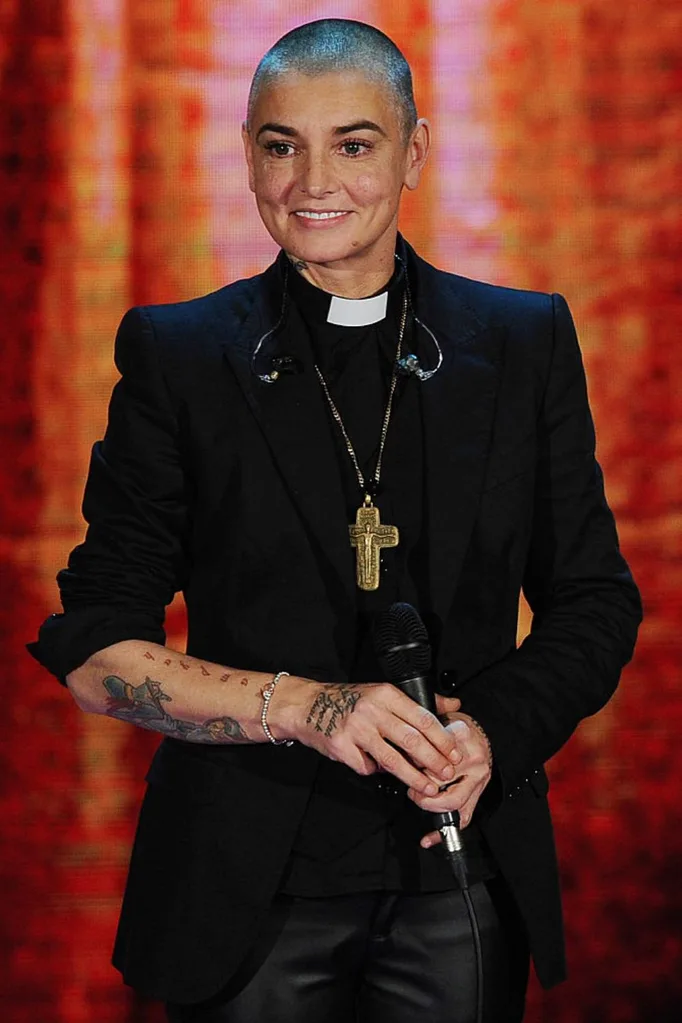
Indeed, that was how O’Connor would go on to be dismissed for the rest of her career. 1994’s Universal Mother was designed to win back her mainstream audience, including a cover of Nirvana’s ‘All Apologies’ – released six months after Kurt Cobain’s death.
However, lyrics about feminism and Irish famine confused many, with the album unable to recapture her sales and her recent past controversy still very much the narrative in interviews.
“I did suffer through a lot because everyone felt it was OK to kick the shit out of me,” she told the documentary Nothing Compares in 2022, noting the SNL fallout meant she spent “so many years isolated and lonely.”
She continued her musical restlessness – releasing reggae and gospel music – and speaking out on issues like abortion.
After a rumoured relationship with singer Peter Gabriel, in March 1996 O’Connor gave birth to a daughter Brigidine – the father was Irish journalist John Waters. That relationship would end badly, resulting in a lengthy custody battle.
By 2001 she married another journalist, Nick Sommerlad – splitting 11 months later. Her son Shane was born in 2004, to musician Donal Lunny. Her fourth child, Yeshua, was born in 2006, after a relationship with Frank Bonadio.
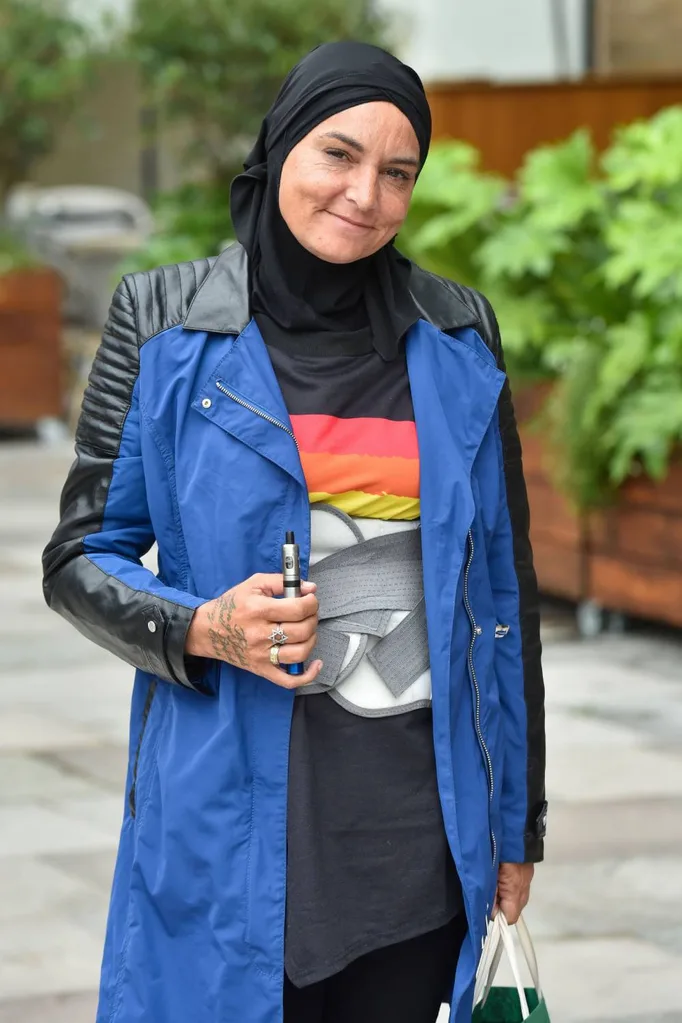
O’Connor’s third marriage was to Steve Cooney in 2010, but they split the next year. Her fourth wedding took place in Las Vegas in December 2011, marrying Irish therapist Barry Herridge, while she became a grandmother in 2015 after her first son Jake had his own son.
O’Connor still made headlines. In 2013 she wrote an open letter to Miley Cyrus, who’d just appeared naked in the ‘Wrecking Ball’ video, stating “Women are to be valued for so much more than their sexuality. We aren’t merely objects of desire. I would be encouraging you to send healthier messages to your peers… that they and you are worth more than what is currently going on in your career.”
In 2017 she changed her legal name to Magda Davitt, wanting to free herself of “parental curses”, then converting to Islam the next year, changing her name to Shuhada Sadaqat. She spoke about her PTSD, cannabis addiction and mental illness. She continued to speak out about sexual abuse in the Catholic church, stating in 2022: “Everything I’d been raised to believe about the church was a lie.”
When O’Connor released her memoir Rememberings in 2021 she made headlines for writing about her dealings with Prince.
Seven years earlier she told an interviewer Prince had “summoned” her to his house after the success of Nothing Compares 2U – most of the female acts in his orbit at the time he either dated them or moulded them into his image. “I did meet him a couple of times, we didn’t get on at all. In fact, we had a punch-up,” she wrote, noting he didn’t like how she swore in interviews. “It’s foolish to do this to an Irish woman…so I told him to fuck off, he got quite violent, I had to escape out of his house at five in the morning. He packed a bigger punch than mine.”
Prince reclaimed Nothing Compares 2U, performing the song live. After his death, his estate were so angered by O’Connor’s claim in her book they refused to allow the 2022 documentary Nothing Compares to use her version of his track.
It remains her most popular song, but her discography is full of rich lyrical ideas and intense vocals. After her passing her bravery and fearlessness are being hailed by artists she paved the way for and the causes she fought for at a time when that her career suffered. The way she was treated for speaking her truth has not aged well. Her well-lived life and the uncompromising music she leaves behind were extraordinary.
